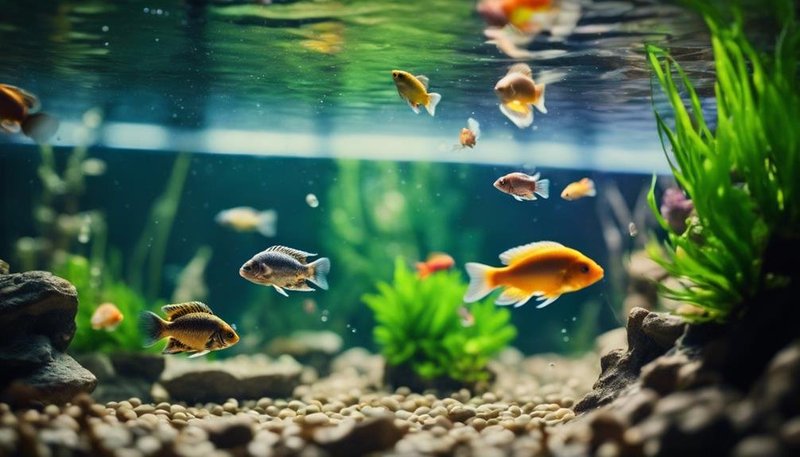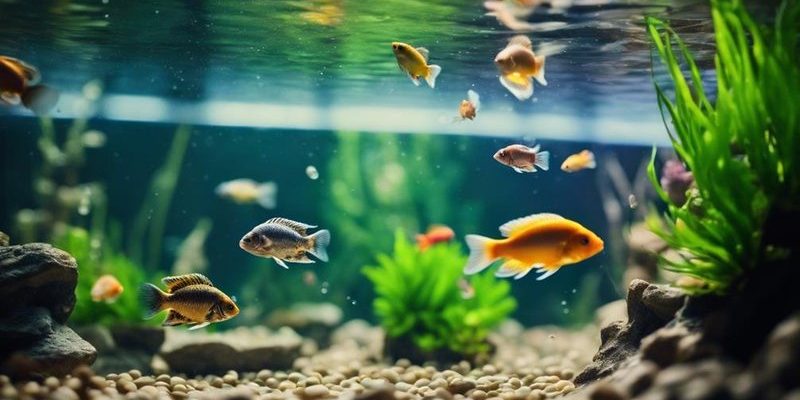
Think of breeding cichlids as setting the stage for a performance. You need the right setting, the right actors, and a little patience. From setting up the tank to understanding the breeding rituals, each step plays a crucial role in your success. If you’re ready to roll up your sleeves and dive into the world of cichlid breeding, let’s explore what it takes to raise these fascinating fish at home.
Understanding Cichlid Types
Before you start, it’s essential to know that not all cichlids are the same. There are many species, each with its own unique traits and breeding behaviors. For beginners, it’s often recommended to start with popular ones like African cichlids, South American cichlids, or even Central American cichlids.
African cichlids, for instance, are known for their vibrant colors and energetic nature. They often breed in group settings and can be a bit aggressive, especially during mating. On the other hand, South American cichlids, like the Angel Fish, are generally more docile. They usually prefer to pair off and create more stable environments for their fry (baby fish). Understanding these differences helps you pick the right species for your breeding adventure.
Are you leaning towards one type of cichlid over another? It’s wise to do a bit of research on the specific needs and habits of the cichlids you’re interested in. This way, you can create the best environment to encourage them to breed successfully.
Setting Up the Perfect Aquarium
Cichlids need a well-maintained aquarium to thrive and breed. Start with a tank size of at least 30 gallons—this gives them enough space to swim and establish territories. You’ll want to include plenty of hiding spots and decorations; rocks, caves, and plants are fantastic. Not only do they provide shelter, but they also create a natural feel that cichlids love.
When setting up your tank, pay attention to the water parameters. Cichlids are sensitive to changes in their environment. Test the water regularly to ensure the pH is around 7.5 to 8.5 and maintain a temperature between 75°F and 82°F. A good filtration system is crucial too; cichlids can be messy eaters, so keeping the water clean will help maintain their health and promote successful breeding.
Don’t forget about lighting! Cichlids thrive with a consistent light cycle, mimicking their natural habitat. Aim for about 10 to 12 hours of light a day. This not only keeps plants healthy but can also trigger breeding behaviors in your fish.
Choosing the Right Mates
When you’re ready to breed, selecting the right pair is vital. Cichlids are known for their unique courtship rituals. Often, a male will display flashy colors to attract a female. So, it’s essential to watch their interactions. A good pairing involves a healthy male and female that have compatible traits and behaviors.
You might be wondering how to tell them apart. In many species, males are typically larger and have more vibrant colors, while females may have a rounder belly, especially when they are full of eggs. If you’re unsure, consider purchasing a bonded pair from a reputable breeder. This can save you some hassle and increase your chances of successful breeding.
Once you’ve chosen your pair, keep them in a separate breeding tank if possible. This reduces stress and aggression and allows them to focus on spawning without distractions from other fish.
Breeding Behavior and Spawning
Once your cichlid pair is ready to breed, you’ll see some fascinating behaviors. The male will usually engage in a mating dance, displaying his fins and colors to woo the female. It’s like watching a nature documentary right in your living room! During this phase, they’ll explore the tank together, inspecting potential spawning sites.
When the female is ready to lay her eggs, she’ll typically choose a flat surface—like a rock or the side of a tank. Cichlids can spawn many eggs at once, anywhere from 20 to 100! After laying the eggs, the male fertilizes them. Often, the female will guard the eggs fiercely, while the male protects the territory. It’s a team effort and can be quite the sight!
During this time, being hands-off is crucial. Avoid disturbing the tank too much, as it can stress the fish and lead to abandoning the eggs. Keep the water clean and maintain stable conditions to give them the best chance for success.
Taking Care of Cichlid Fry
After a few days, you should see tiny fry swimming around the tank! At this stage, it’s essential to ensure their environment is safe and nutrient-rich. Cichlid fry are quite small, so they need special care. Consider feeding them infusoria or finely crushed flake food until they grow a little larger. You can also introduce baby brine shrimp for added nutrition.
Monitoring water quality is still a must. Newly hatched fry are sensitive to changes, so keep an eye on the parameters. You might want to do partial water changes regularly to maintain clean water without stressing the babies.
As your fry grow, they’ll start to develop their own personalities. Some might be more aggressive, while others are gentle. It can be tempting to keep them all together, but consider separating the more aggressive ones to reduce fighting. This will help ensure that they all have the best chance to thrive.
Common Challenges When Breeding Cichlids
Breeding cichlids isn’t always smooth sailing. You may run into a few hiccups along the way. For instance, some pairs may not breed even after preparing the environment and choosing mates. This happens for various reasons—for instance, stress, improper tank conditions, or incompatible fish personalities.
Another common issue is with fry survival. Not all eggs or fry will make it to adulthood. This can be disheartening, especially when you’ve put in so much effort. Loss can be caused by poor water quality, disease, or even bullying from stronger fry. Keeping a close eye on their development can help you catch problems early.
Lastly, if your cichlids are becoming overly aggressive, it may be necessary to separate them. Sometimes, it’s best to give the female a break after spawning, allowing her to regain her strength before breeding again.
Wrapping Up Your Cichlid Breeding Journey
Breeding cichlids at home can be a rewarding experience filled with colorful moments and lively interactions. By understanding their needs, behaviors, and the right environment, you’re equipping yourself for success. Remember, patience is key! Every breeding attempt is a learning opportunity, and you’ll grow your knowledge along the way.
So, whether you’re captivated by their colors, intrigued by their behavior, or simply love the idea of raising fish, diving into cichlid breeding can be your next great adventure. Enjoy the journey and the little joys it brings! Happy fish-keeping!

